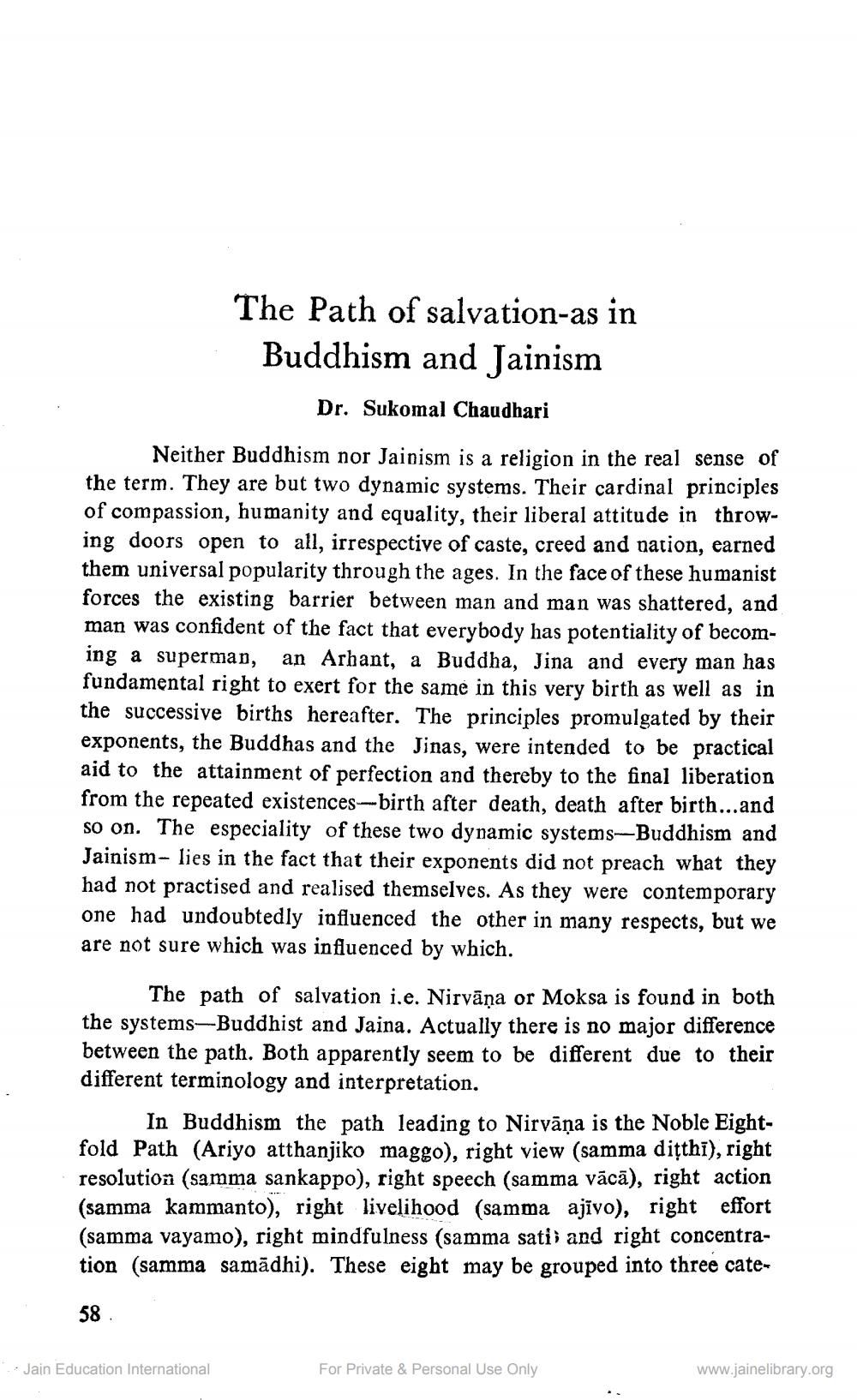________________
The Path of salvation-as in Buddhism and Jainism
Dr. Sukomal Chaudhari Neither Buddhism nor Jainism is a religion in the real sense of the term. They are but two dynamic systems. Their cardinal principles of compassion, humanity and equality, their liberal attitude in throwing doors open to all, irrespective of caste, creed and nation, earned them universal popularity through the ages. In the face of these humanist forces the existing barrier between man and man was shattered, and man was confident of the fact that everybody has potentiality of becoming a superman, an Arhant, a Buddha, Jina and every man has fundamental right to exert for the same in this very birth as well as in the successive births hereafter. The principles promulgated by their exponents, the Buddhas and the Jinas, were intended to be practical aid to the attainment of perfection and thereby to the final liberation from the repeated existences--birth after death, death after birth...and so on. The especiality of these two dynamic systems-Buddhism and Jainism- lies in the fact that their exponents did not preach what they had not practised and realised themselves. As they were contemporary one had undoubtedly influenced the other in many respects, but we are not sure which was influenced by which.
The path of salvation i.e. Nirvāṇa or Moksa is found in both the systems-Buddhist and Jaina. Actually there is no major difference between the path. Both apparently seem to be different due to their different terminology and interpretation.
In Buddhism the path leading to Nirvāṇa is the Noble Eightfold Path (Ariyo atthanjiko maggo), right view (samma dițthi), right resolution (samma sankappo), right speech (samma vācā), right action (samma kammanto), right livelihood (samma ajīvo), right effort (samma vayamo), right mindfulness (samma satii and right concentration (samma samādhi). These eight may be grouped into three cate
58
Jain Education International
For Private & Personal Use Only
www.jainelibrary.org




